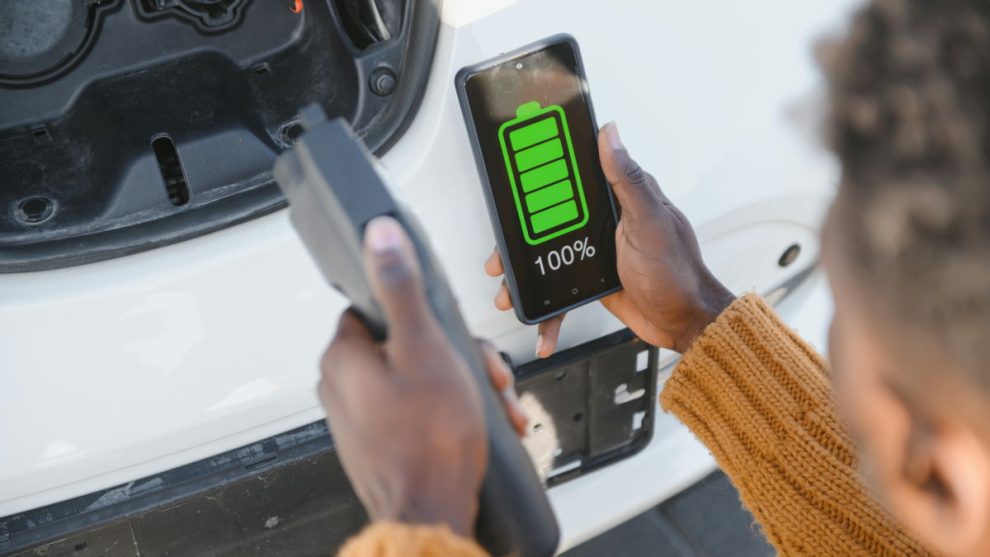Lithium-ion batteries have revolutionized our world. They power our smartphones, laptops, electric vehicles, and countless other devices. However, a hidden threat lurks beneath their veneer of clean energy – the presence of per- and polyfluoroalkyl substances (PFAS), also known as “forever chemicals.” These persistent pollutants raise significant environmental and health concerns, casting a shadow over the future of lithium-ion technology.
A Green Facade: The Dark Side of Lithium-Ion Batteries
At first glance, lithium-ion batteries appear to be an environmentally friendly alternative to traditional combustion engines. They produce zero emissions during operation, making them a cornerstone of the clean energy transition. However, image one reveals the hidden complexities within a lithium-ion battery.
Image two showcases the life cycle of a lithium-ion battery. While the focus often lies on the clean energy they provide, the graphic highlights the potential environmental risks at each stage, from mining the raw materials to disposal.
PFAS enter the picture during the manufacturing process of lithium-ion batteries. Certain types of PFAS are used in the battery’s electrolyte solution, which helps facilitate the flow of ions between the electrodes. However, these “forever chemicals” are notorious for their extreme persistence in the environment. They don’t readily break down and can accumulate in soil, water, and even the human body.
A Cause for Concern: The Environmental and Health Impacts of PFAS
The presence of PFAS in lithium-ion batteries raises several environmental and health concerns:
-
Water Contamination: PFAS can leach from landfills or improperly disposed batteries, contaminating groundwater sources. This poses a risk to human health as well as aquatic ecosystems.
-
Bioaccumulation: PFAS can bioaccumulate in the food chain, meaning they can become concentrated in organisms at higher trophic levels. This can lead to health problems in humans who consume contaminated fish or water.
-
Health Risks: Studies have linked exposure to PFAS to various health problems, including certain cancers, immune system deficiencies, and developmental issues in children.
The potential environmental and health risks associated with PFAS necessitate a closer look at lithium-ion battery production and disposal practices.
A Call to Action: Mitigating the Threat
Addressing the PFAS challenge in lithium-ion batteries requires a multi-pronged approach:
-
Alternative Materials: Researchers are actively seeking PFAS-free alternatives for use in battery electrolytes. Replacing these problematic chemicals with safer options is crucial for a sustainable future.
-
Sustainable Manufacturing: Implementing stricter regulations and adopting closed-loop manufacturing processes can minimize PFAS contamination during battery production. Additionally, responsible battery recycling practices are essential to prevent these chemicals from entering the environment.
-
Transparency and Accountability: Battery manufacturers need to be transparent about the materials used in their products and take responsibility for the environmental impact of their production processes.
The onus lies not just on manufacturers but also on policymakers to implement stricter regulations and promote research into safer battery alternatives.
A Race Against Time: The Quest for Sustainable Battery Solutions
The transition to clean energy cannot come at the cost of environmental degradation. Finding sustainable solutions for lithium-ion batteries is a pressing issue. Here’s what the future holds:
-
The Rise of New Technologies: Solid-state battery technology shows promise as a potential replacement for lithium-ion batteries. These batteries offer increased energy density, faster charging times, and potentially reduced reliance on PFAS.
-
A Second Look at Recycling: As the number of electric vehicles and electronic devices grows, so does the need for efficient and responsible battery recycling practices. Extracting valuable materials from used batteries and reusing them in new ones can significantly reduce the environmental footprint.
-
A Collaborative Effort: Researchers, manufacturers, and policymakers need to come together to develop a roadmap for sustainable battery technology. Collaboration is key to mitigating the PFAS challenge and ensuring a truly clean energy future.
The lithium-ion battery revolution is at a crossroads. Addressing the PFAS problem head-on is critical to ensure a sustainable future for this essential technology. By embracing innovation, implementing responsible practices, and fostering collaboration, we can harness the power of lithium-ion batteries without compromising the health of our planet.















Add Comment